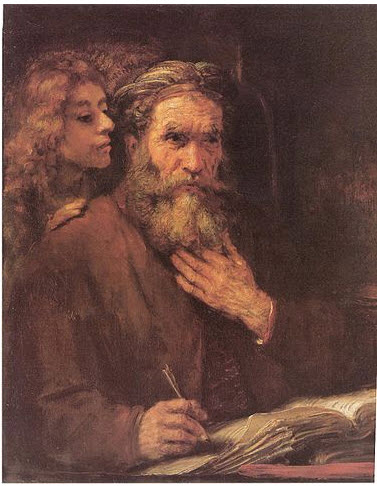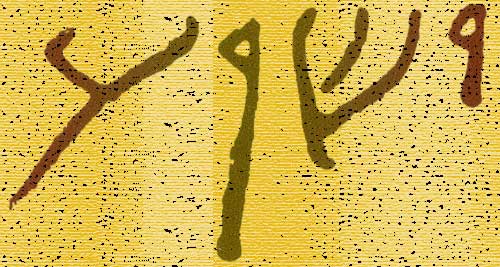17. And Jesus answered and said unto him, Blessed art thou--Though
it is not to be doubted that Peter, in this noble testimony to Christ,
only expressed the conviction of all the Twelve, yet since he alone
seems to have had clear enough apprehensions to put that conviction in
proper and suitable words, and courage enough to speak them out, and
readiness enough to do this at the right time--so he only, of all the
Twelve, seems to have met the present want, and communicated to the
saddened soul of the Redeemer at the critical moment that balm which was
needed to cheer and refresh it. Nor is Jesus above giving indication of
the deep satisfaction which this speech yielded Him, and hastening to
respond to it by a signal acknowledgment of Peter in return.
Simon Bar-jona--or, "son of Jona"
(Joh 1:42),
or "Jonas"
(Joh 21:15).
This name, denoting his humble fleshly extraction, seems to have been
purposely here mentioned, to contrast the more vividly with the
spiritual elevation to which divine illumination had raised him.
for flesh and blood hath not revealed it unto thee--"This is not the
fruit of human teaching."
but my Father which is in heaven--In speaking of God, Jesus, it
is to be observed, never calls Him, "our Father" (see on
Joh 20:17),
but either "your Father"--when He would encourage His timid believing
ones with the assurance that He was theirs, and teach themselves to
call Him so--or, as here, "My Father," to signify some peculiar action
or aspect of Him as "the God and Father of our Lord Jesus Christ."
JFB.
The Book of Matthew
Matthew 2:2 - Where is he that is born King of the Jews? for we have seen his star in the east, and are come to worship him.
Matthew 18:3 - And Jesus said, Verily I say unto you, Except ye be converted, and become as little children, ye shall not enter into the kingdom of heaven.
Matthew in The New Testament - A Brief Overview

Painting of St. Matthew with Angel by Rembrandt
The Word Gospel. The first book of the English Bible that most of us read from is the Gospel of Matthew. Matthew is the first of the four gospel writings, yet there is only one gospel about Jesus Christ and there are four different writers: Matthew, Mark, Luke, and John. The word "Gospel" means "good news", and the good news is about Jesus Christ dying on the cross and then 3 days later conquering death and rising from the dead, offering salvation to all mankind, this is the Gospel.
Summary of the Book of Matthew
Brief Summary. Jesus of Nazareth is indeed the long awaited Messiah King of he Jews as foretold by the ancient Jewish prophets. He came to reveal how to enter the "Kingdom of Heaven."
Purpose. It is very obvious that the Gospel of Matthew was written for the purpose of revealing that the man Jesus of Nazareth was actually the King of the Jews, the long awaited Messiah, the sovereign Lord Jehovah who came from heaven to this world revealing to mankind the "kingdom of heaven". The King of the Jews, the Messiah Jesus fulfilled every prophecy that was spoken about Him in the ancient Jewish Scriptures, in the Old Testament. The prophecies that spoke of the "Kingdom" that the Messiah would bring would be a spiritual Kingdom that would never be destroyed.
Audience. When reading the book of Matthew it becomes clear that the writer was speaking to a Jewish audience. One of the obvious reasons is that the "Kingdom of Heaven" is mentioned over 30 times and never the Kingdom of God. This is because the Jews do not speak the name of God and this could be the very reason that Matthew used this phrase. There are many times while reading the book that an event happens and a prophecy is cited. The event is mentioned as the direct fulfillment of a promise made to the Jews by one of their Jewish prophets, and the fulfillment of the prophecy was happening before their very eyes. It is clear that the audience of people are the Jews, they were awaiting their King, and Matthew records that the King had come and they rejected their King.
Authorship. Early Christian writings and traditions have attributed the authorship of the Gospel of Matthew to the apostle Matthew. Many scholars question whether or not Matthew was the true author of the first Gospel, but there is no way at this current time to be absolutely positive based on historical evidence. Most agree that Matthew was the author. The Bible reveals that Matthew, or Levi, as he was sometimes called, collected taxes for the Romans. One day Jesus passed by and called Matthew to come and follow him, and Matthew did so. The Bible also records that Matthew held a banquet at his house with several of his tax collector friends and Jesus being invited to the banquet was the guest of honor (Mark 2:14-15). The Bible also provides a list of the 12 apostles and Matthew was named among them.
Date. There is no way to determine with absolute certainty the date that the book of Matthew was written. Most scholars agree that the book of Matthew was written before the destruction of Jerusalem in 70 A.D., this is because Jesus spoke of many events as though they had not happened yet. A large number of scholars do not believe in the miracle of prophecy and therefore insist that the Gospel of Matthew was written after the fall of Jerusalem because of the accuracy of the predicted events.
Language. There are many references among the books in the history of the early church that state that the Gospel of Matthew was originally written by Matthew in the biblical Hebrew language, and he was writing to an audience of Jews throughout the world who had become followers of Jesus. Unfortunately there is no evidence whatsoever of a Hebrew or Aramaic manuscript, so many scholars have agreed that the Gospel of Matthew is not actually a translation from Hebrew into Greek, but was actually written in Greek. The whole subject of the Gospel of Matthew being written in Hebrew must remain speculation rather than fact.
Outline of the Book of Matthew
The King Comes and His Kingdom is Rejected -
Matthew 1-12
The Rejection of the King's Teaching and Ministry -
Matthew 13-25
The King's Trial and Crucifixion - Matthew 26-27
The King's Victory and Resurrection - Matthew 28
The King's Commissioning of His Apostles -
Matthew 28
Matthew - Interesting Notes
![]() Matthew mentions four women in his genealogy which is not
typical for Jewish genealogical records: Tamar, Rahab,
Ruth, Bathsheeba who were all associated with some sort of
immorality. Tamar (incest), Rahab (harlotry), Ruth (a descendant
of Moab who committed incest) and Bathsheba (adultery). Christ's
greatness was in Himself not his genealogy.
Matthew mentions four women in his genealogy which is not
typical for Jewish genealogical records: Tamar, Rahab,
Ruth, Bathsheeba who were all associated with some sort of
immorality. Tamar (incest), Rahab (harlotry), Ruth (a descendant
of Moab who committed incest) and Bathsheba (adultery). Christ's
greatness was in Himself not his genealogy.
![]() There are many intimations for the word "King" in Matthew if one takes
the time to look. For example in chapter one there is a royal genealogy
mentioning king David at the start. Chapter two reveals the kingly gifts
of the Magi. Chapter three calls John the Baptist a "herald" which is a
cultural term that represents a herald for a king. Etc.
There are many intimations for the word "King" in Matthew if one takes
the time to look. For example in chapter one there is a royal genealogy
mentioning king David at the start. Chapter two reveals the kingly gifts
of the Magi. Chapter three calls John the Baptist a "herald" which is a
cultural term that represents a herald for a king. Etc.
![]() There are similarities with the number four. The four colors in the veil
of the Temple were purple, scarlet, white, and blue. The four faces of
the cherubim are the lion, ox, man, eagle. The four Gospel accounts are
Matthew, Mark, Luke, John.
There are similarities with the number four. The four colors in the veil
of the Temple were purple, scarlet, white, and blue. The four faces of
the cherubim are the lion, ox, man, eagle. The four Gospel accounts are
Matthew, Mark, Luke, John.
Quick Reference Maps - Matthew
The Kingdom of Herod the Great
The Divisions of Herod's Kingdom
The Beginning of Christ's Ministry
Nazareth and the Sea of Galilee
Jerusalem in the Time of Jesus
Jesus Journeys from Nazareth to Jerusalem
The Final Journey of Jesus to Jerusalem

The Name Jesus In Ancient Hebrew Text
"Yeshua" in First Century Hebrew Text. This is how the name "Jesus"
would have been written in ancient Hebrew documents. The four letters or
consonants from right to left are Yod, Shin, Vav, Ayin (Y, SH, OO, A).
Jesus is the Greek name for the Hebrew name Joshua or Y'shua which means
"The LORD or Yahweh is Salvation".
Matthew Resources
Outline of the Life of Jesus in Harmony
Simple Map of First Century Israel
Topographical Map of First Century Israel
Map of the Ministry of
Jesus
Map of the Roads in Ancient Israel
Map of the Roman Empire